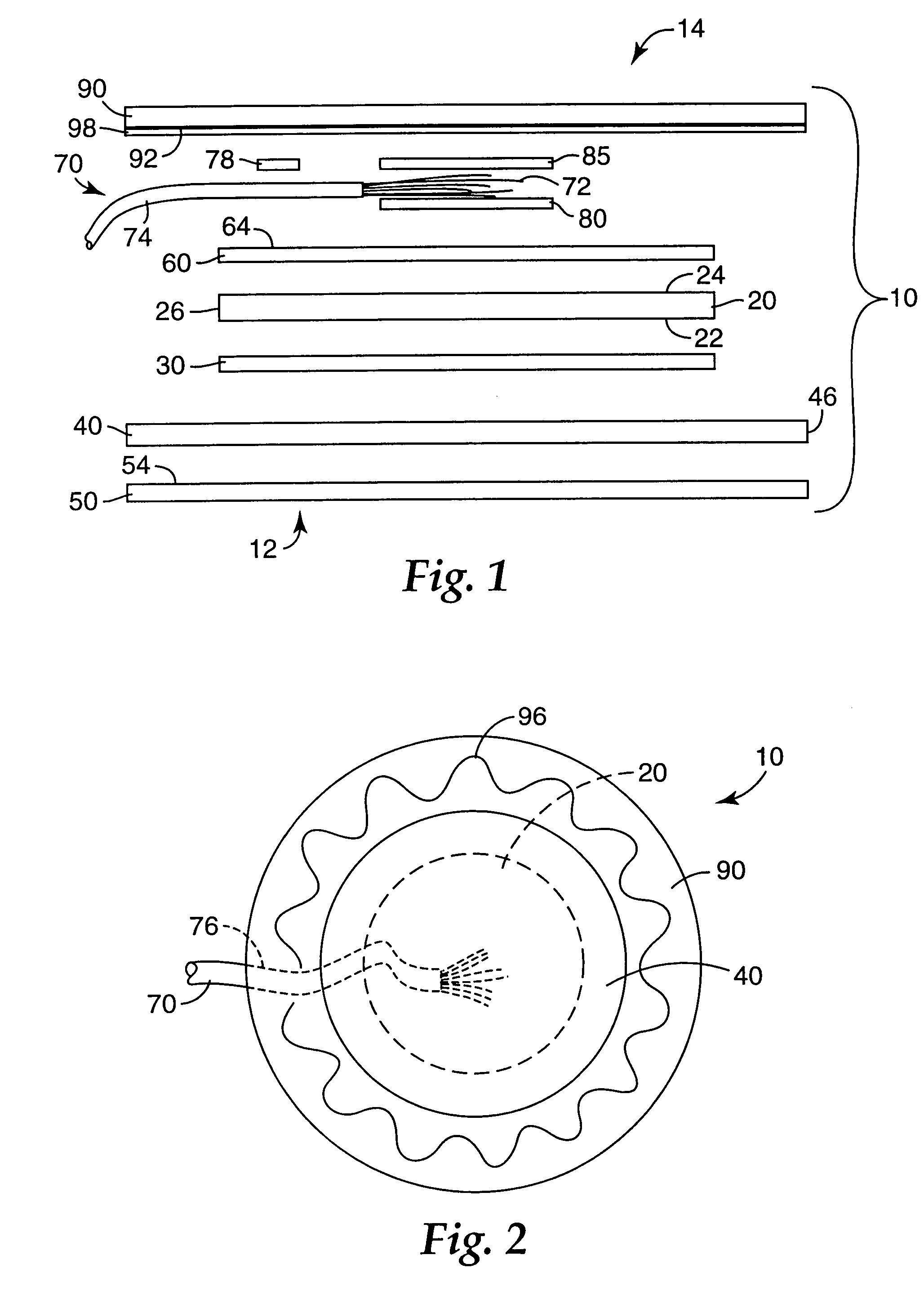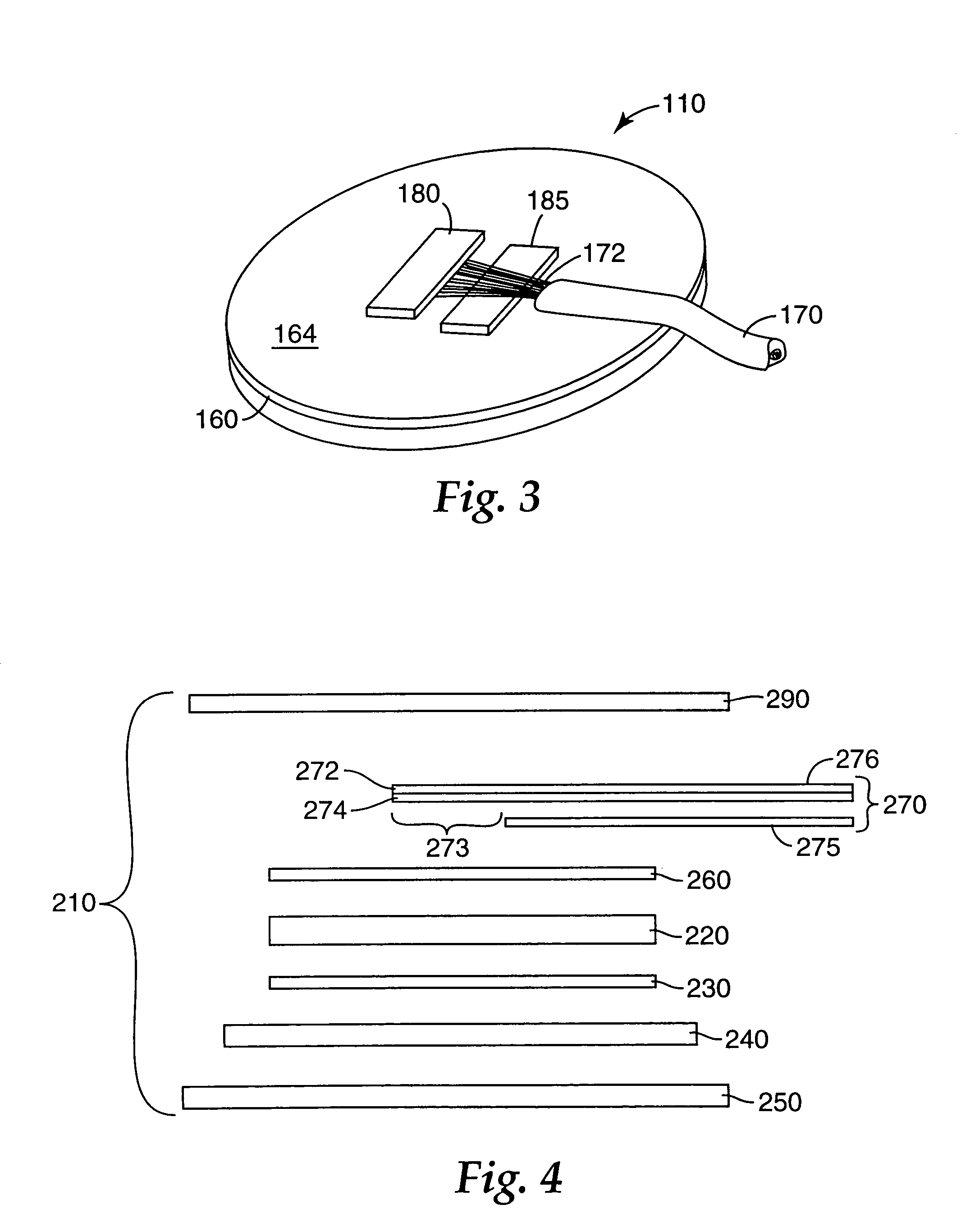Biomedical electrode with current spreading layer
a biomedical electrode and current spreading technology, applied in the field can solve the problems of reducing the effectiveness of radiological images taken through the multifunctional biomedical electrode, difficult design of multifunctional biomedical electrodes, etc., and achieves the effects of reducing or eliminating hot spots, improving patient comfort, and lack of pliability in the conductive undercoating
- Summary
- Abstract
- Description
- Claims
- Application Information
AI Technical Summary
Benefits of technology
Problems solved by technology
Method used
Image
Examples
example 1
[0073] A conductive polymeric sheet with a thick silver ink layer coated on one side was obtained from Prime Label Inc. (Pewaukee, Wis.). The conductive polymeric sheet was made of PVC rendered electrically conductive by inclusion of carbon powder. The silver ink layer formed the current spreading layer of the electrode.
[0074] The opposite surface of the conductive polymeric sheet, i.e., the surface that was not coated with the silver ink forming the current spreading layer, was coated with an approximately 10 micrometer thick layer of silver-silver chloride ink (R301 available from Ercon Inc., Wareham, Mass.). The silver-silver chloride ink layer formed the conductive undercoating on the conductive polymeric sheet.
[0075] Pieces were cut out of the sheet with the current spreading layer and the conductive undercoating in rectangular shapes having sides with lengths of approximately 11 centimeters (cm) by 7 cm.
[0076] A hydrogel electrolyte adhesive with a thickness of 0.5 millimet...
PUM
 Login to View More
Login to View More Abstract
Description
Claims
Application Information
 Login to View More
Login to View More - R&D
- Intellectual Property
- Life Sciences
- Materials
- Tech Scout
- Unparalleled Data Quality
- Higher Quality Content
- 60% Fewer Hallucinations
Browse by: Latest US Patents, China's latest patents, Technical Efficacy Thesaurus, Application Domain, Technology Topic, Popular Technical Reports.
© 2025 PatSnap. All rights reserved.Legal|Privacy policy|Modern Slavery Act Transparency Statement|Sitemap|About US| Contact US: help@patsnap.com



